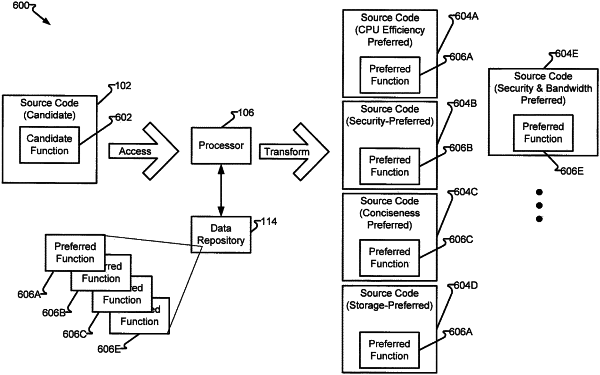| CPC G06F 8/443 (2013.01) [G06F 8/36 (2013.01); G06F 8/427 (2013.01)] | 20 Claims |

|
1. A method comprising:
retrieving, by a processor from a data repository, candidate code, having a candidate relation, and comprising a first human-readable machine instruction;
accessing, by the processor from the data repository, a preferred relation comprising a second human-readable machine instruction that has been previously identified as authorized code;
accessing, by the processor, an equivalence limitation threshold,
automatically determining, by the processor, equivalence between the candidate relation and the preferred relation including:
deriving a logic equation for the candidate relation; and
accessing a logic equation for the preferred relation, wherein equivalence is failed to be determined upon the logic equation for the candidate relation being determined to be different from the logic equation for the preferred relation,
wherein the processor then further executes a plurality of processing operations, comprising the determination of equivalence between the candidate relation and the preferred relation, until the equivalence limitation threshold to reached,
upon equivalence being determined, automatically providing, by the processor,
indicia of equivalence associated with the candidate relation and the preferred relation;
upon the indicia being provided, automatically transforming, by the processor, the candidate code comprising replacing the candidate relation with the preferred relation, and
outputting the transformed candidate code; and
wherein the equivalence limitation threshold comprises at least one of: a level of hypothesis strength, number of the processing operations required to reach the level of hypothesis strength, clock time, processor cycles, processing resources performing the processing operations in addition to the processor, and
processing resources performing the processing operations excluding the processor.
|